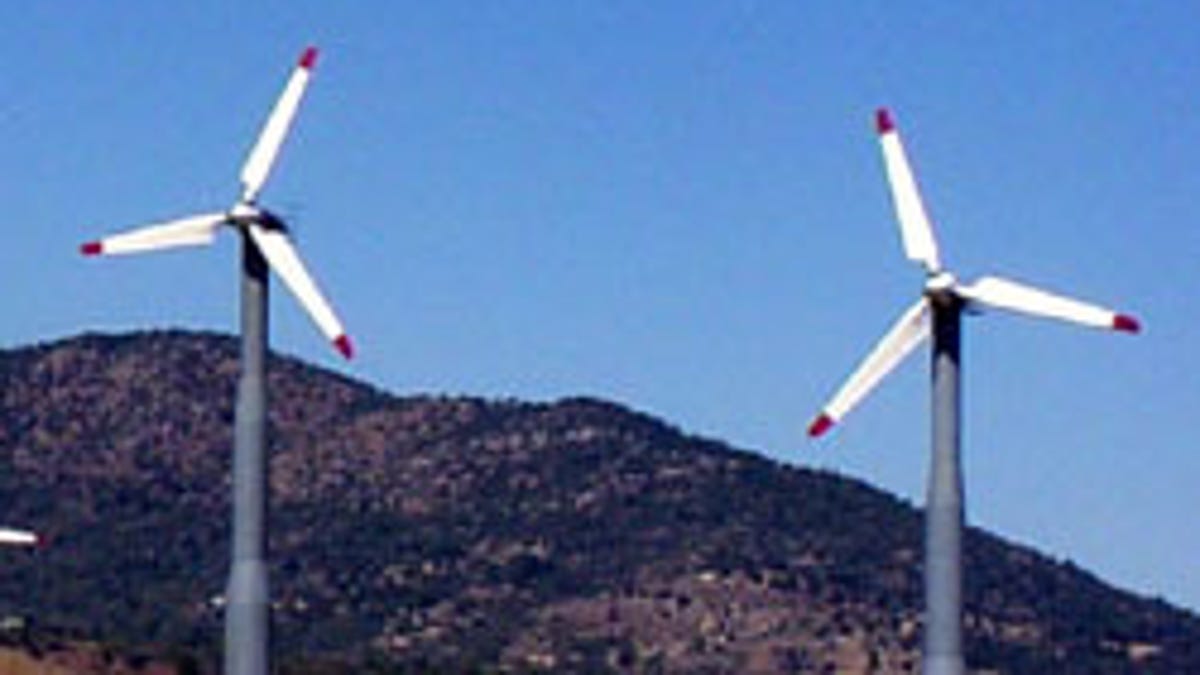U.S. wind energy popular, but lacks investment
China and Europe outpacing U.S. in building wind energy infrastructure, despite public interest in adding wind energy to U.S. grid.

Despite public approval, U.S. wind energy investment is slowing down instead of growing, according to the American Wind Energy Association.
An overwhelming majority of Americans support a renewable electricity standard, and wind energy investment in particular, according to a poll of 600 likely voters conducted in March by Newhouse of Public Opinion Strategies and Bennett, Petts & Normington.
Specifically, 89 percent of Americans said increasing the amount of energy the U.S. gets from wind is a good idea. Broken down by ideology, 84 percent of Republicans, 93 percent of Democrats, and 88 percent of independents support increasing the use of wind energy in the U.S.
But that bipartisan enthusiasm for wind has not translated into real-world investment or public policy, according to a detailed report released this week by the American Wind Energy Association (AWEA).
In 2009, the U.S. added more renewable power infrastructure than new infrastructure for fossil fuels, but that trend seems to be reversing for 2010.
In the U.S., 1,239 megawatts worth of wind energy projects were installed in the first half of 2010. While that's a lot of wind turbines, it's actually 57 percent below 2008 levels and 71 percent below 2009 levels, according to the AWEA.
In comparison, more than 2,000 megawatts worth of new construction for coal and natural gas projects were installed in the first half of 2010 with encouragement directly from the Obama administration and the U.S. government.
Tenaska, for example, was awarded a combined $417 million investment tax credit from the U.S. Department of Energy and the U.S. Treasury to build the Taylorville Energy Center, a clean coal energy plant. It's believed by many to be the largest tax credit ever granted to a single project.
"Taylorville Energy Center will convert Illinois coal into clean-burning substitute natural gas, use it to generate electricity and capture more than 50 percent of the plant's CO2 emissions," Tenaska said in a statement.
But that is not to say that there isn't still private industry support for big wind. Last week, Terra-Gen Power, for example, announced it had garnered $1.2 billion in financing to build a 3,000-megawatt wind farm in Tehachapi, Calif.
The AWEA Mid-Year 2010 Market report details 5,698 megawatts worth of wind projects scheduled for completion either within the year, or within the next few years. But beyond that, there isn't much more in the pipeline. Even if all known U.S. projects were completed this year, it will still put 2010 far behind 2009 figures, and the U.S. behind Europe and China, according to AWEA.
In 2009, the U.S. installed 10,000 megawatts worth of wind turbines, the European Union installed 10,163 megawatts, and China installed 13,800 megawatts. The U.S. also trails in offshore wind with its first offshore turbines still waiting to be built, while Europe now has a total of 948 offshore wind turbines in operation, according to the European Wind Energy Association (EWEA).
But most notably China "produced 25 percent of the world's wind turbines (up from 10 percent in 2007)," according to the U.N. 2009 report on global renewable energy statistics.
The U.S. has stalled on building wind turbine manufacturing facilities. Two manufacturing plants have opened so far in 2010, compared to seven plants opening in 2008 and five in 2009, according to the AWEA.
"In effect, the U.S. is losing the clean energy manufacturing race to Europe and China, which have firm, long-term renewable energy targets and policy commitments in place," AWEA said in a statement.
Within the U.S., Texas, Iowa, and California lead the country with 9,708 megawatts, 3,670 megawatts, and 2,739 megawatts worth of wind energy infrastructure, respectively, according to the AWEA statistics.
Correction, July 29 at 4:45 a.m. PDT: This story initially omitted Iowa from the list of top U.S. states ranked for wind energy infrastructure. While Iowa has not added any wind infrastructure so far for 2010, it is second overall and California is third.

